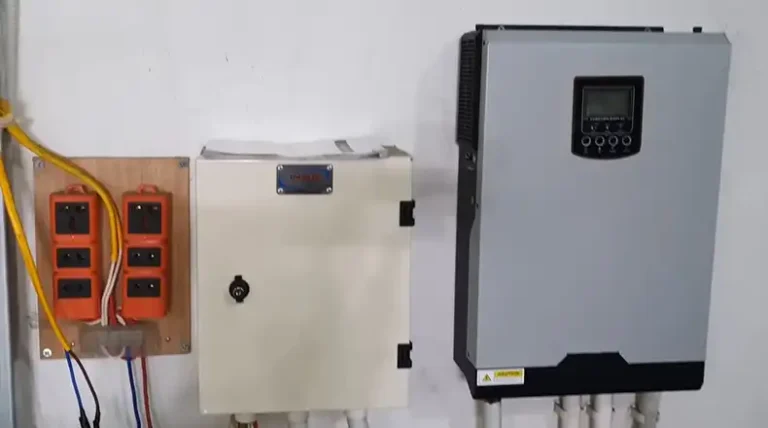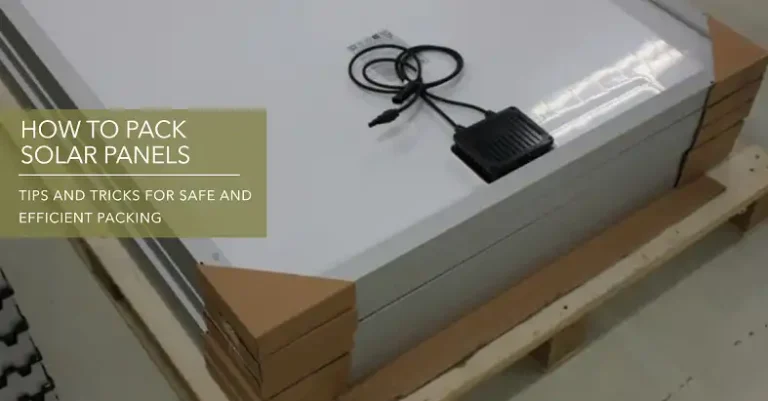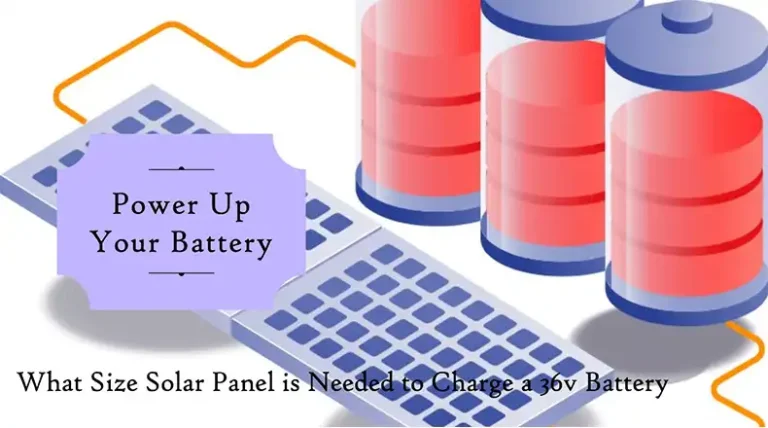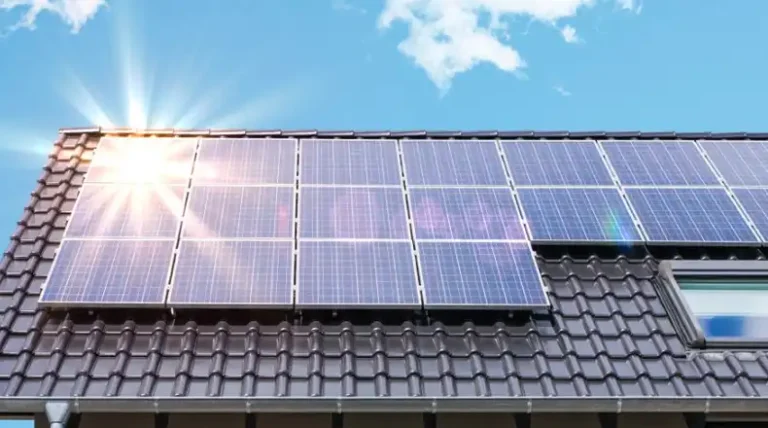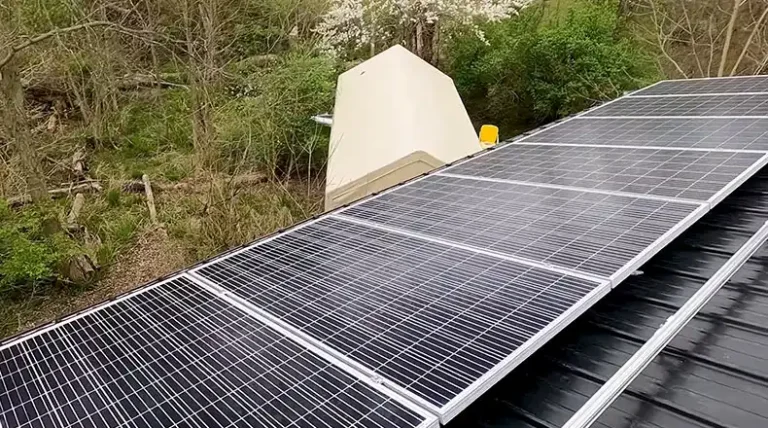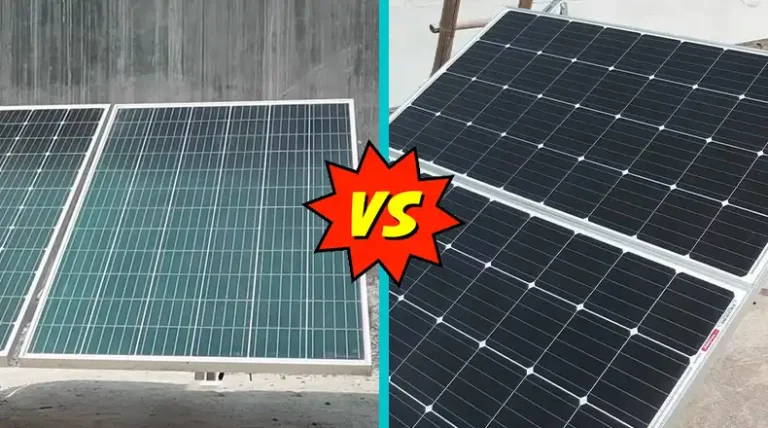Cost Of A Ground Mount Solar System
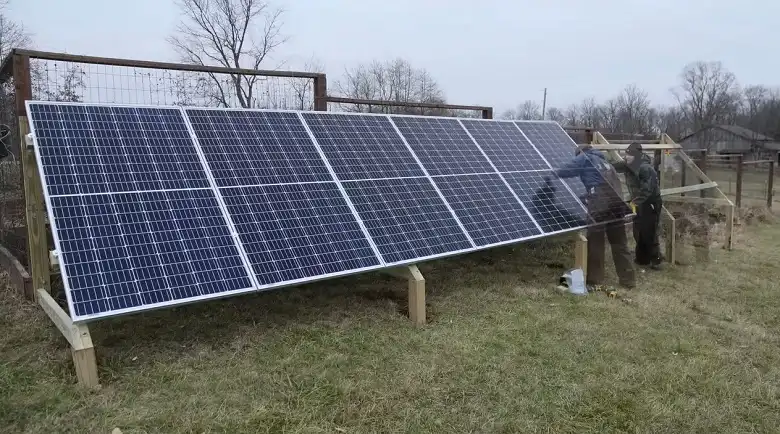
Ground-mounted solar panel systems offer a compelling alternative for homeowners, businesses, and farms looking to harness solar energy but face challenges with traditional roof-mounted installations.
While they typically come with a higher price tag, ground-mounted systems provide unique advantages that can make them a worthwhile investment for many property owners.
On average, a ground-mounted solar panel system for residential use costs between $27,000 and $60,000+ before incentives, with prices varying based on system size and specific installation factors.
For businesses and farms, costs can range from $150,000 to $500,000+ for larger systems. These figures are generally about 10% higher than comparable roof-mounted installations due to the additional equipment and labor required.
In this comprehensive guide, we’ll explore the various factors that influence the cost of ground-mounted solar systems, compare them to roof-mounted alternatives, and help you determine if this solar solution is the right fit for your energy needs and property conditions.
What are Ground-Mounted Solar Systems?
Ground-mounted solar systems are an alternative to traditional roof-mounted installations, offering a solution for properties where roof-mounted panels may not be feasible or ideal. These systems are exactly what they sound like – solar panels mounted on the ground rather than on a roof.
Types of Ground-Mounted Solar Systems
There are two main types of ground-mounted solar systems:
Standard Ground Mounts
Standard ground mounts are the most common type of ground-mounted solar installation. They use a metal frame driven into the ground to support the solar panels at a fixed angle.
Some standard ground mounts allow for manual adjustments a few times a year to account for seasonal changes in the sun’s position, optimizing energy production throughout the year.
These systems are typically less expensive than pole-mounted alternatives and are easier to install and maintain. However, their fixed tilt angle can limit the amount of sunlight they can absorb compared to more advanced tracking systems.
Pole Mounts
Pole-mounted solar systems support multiple panels on a single pole, elevating them higher off the ground than standard mounts. The key advantage of pole mounts is that they often incorporate tracking systems, which automatically adjust the panels’ orientation to follow the sun’s movement throughout the day.
While pole mounts can be more expensive due to the added technology and complex setup, they can significantly increase energy production. Single-axis tracking systems move the panels to follow the sun’s daily path, while dual-axis systems can also adjust for seasonal variations in the sun’s position.
Factors Affecting the Cost of Ground-Mounted Solar Systems
When considering a ground-mounted solar system, it’s important to understand that various factors can influence the overall cost. Let’s explore these key elements that contribute to the price of your solar installation.
System Size and Electricity Production Goals
The size of your solar system is perhaps the most significant factor affecting cost. Larger systems capable of producing more electricity will naturally cost more due to the increased number of panels and associated equipment.
Your energy production goals, typically based on your current electricity consumption, will dictate the size of the system you need.
Equipment Choices
The quality and brand of solar equipment you choose can significantly impact the overall cost of your system. This includes:
Solar Panels: Top-tier brands often come with better warranties and higher efficiency ratings but at a premium price. Mid-range options can offer good value while still providing reliable performance.
Inverters: The type and brand of inverter you select will affect both cost and system performance. Options include string inverters, microinverters, and power optimizers, each with their own price points and benefits.
Mounting Systems: The specific mounting hardware used for your ground-mounted system will contribute to the overall cost.
Location and Site Conditions
Your property’s characteristics play a crucial role in determining installation costs:
Terrain: Uneven or rocky ground may require additional site preparation, increasing labor costs.
Soil Type: The composition of your soil can affect the ease of installation and the type of mounting system required.
Distance from Utility Connection: Longer wire runs to connect your system to the grid will increase costs.
Shading: If your property has significant shading issues, you might need a larger system or additional equipment to maintain desired energy production levels.
Added Technology
Incorporating advanced features like tracking systems can increase both the cost and efficiency of your ground-mounted solar installation:
Single-Axis Tracking: These systems follow the sun’s daily east-to-west movement, potentially increasing energy production by 25% or more.
Dual-Axis Tracking: These more advanced systems also account for seasonal changes in the sun’s position, further optimizing energy capture.
While tracking systems can boost energy production, they also add to the initial cost and may require more maintenance over time.
Average Costs of Ground-Mounted Solar Systems
Understanding the typical costs associated with ground-mounted solar systems can help you budget for your installation and determine if it’s the right choice for your property. Let’s break down the average costs for different types of installations.
Residential Systems
For homeowners considering ground-mounted solar, costs can vary widely based on system size and specific installation factors. Here’s a general overview:
Small Systems (5 kW): Suitable for homes with lower energy needs, these systems typically cost around $27,480 before incentives, or about $19,236 after applying the federal tax credit.
Medium Systems (10 kW): For average-sized homes, expect to pay approximately $40,760 before incentives, or $28,532 after the tax credit.
Large Systems (15 kW): Homes with high energy consumption might require a system of this size, costing about $55,885 before incentives, or $39,119 after the tax credit.
It’s important to note that these prices are averages, and your actual costs may differ based on the factors we discussed earlier, such as equipment choices and site conditions.
Commercial and Agricultural Systems
Businesses and farms often require larger solar installations to meet their energy needs. Here are some typical costs for commercial-scale ground-mounted systems:
50 kW System: Suitable for small businesses or farms, these systems average around $152,500 before incentives, or $75,640 after applying tax credits and depreciation benefits.
100 kW System: Medium-sized operations might opt for this scale, with costs averaging $276,800 before incentives, or $137,292 after tax benefits.
200 kW System: Large commercial or agricultural installations can expect costs around $506,400 before incentives, or $251,175 after tax benefits.
Remember that businesses and farms can often take advantage of additional tax benefits like accelerated depreciation, which can significantly reduce the effective cost of the system.
Comparison to Roof-Mounted Systems
Generally, ground-mounted solar systems cost about 10% more than comparable roof-mounted installations. This price difference is primarily due to the additional materials and labor required for ground mounting, including:
Support Structure: Ground-mounted systems need a separate framework to support the panels, whereas roof-mounted systems use the existing roof structure.
Site Preparation: Leveling the ground, trenching for electrical conduits, and other site work add to the installation costs.
Larger System Potential: Ground-mounted systems often allow for larger installations than roof-mounted options, which can increase overall costs but also boost energy production.
While the initial cost is higher, ground-mounted systems can sometimes offer better long-term value through increased energy production, especially when using tracking technology or when roof conditions are less than ideal for solar.
Cost-Saving Incentives and Tax Benefits
While the upfront costs of ground-mounted solar systems can be substantial, various incentives and tax benefits can significantly reduce your overall investment. Understanding these financial advantages is crucial when considering a solar installation.
Federal Solar Investment Tax Credit
The federal solar investment tax credit (ITC) is one of the most significant incentives available for solar energy systems in the United States. This credit allows you to deduct 30% of the cost of your solar system from your federal taxes.
It’s available for both residential and commercial installations, making it a valuable tool for reducing the net cost of your ground-mounted solar system.
For example, if your system costs $40,000, you could be eligible for a $12,000 tax credit, effectively reducing your out-of-pocket cost to $28,000.
Accelerated Depreciation for Businesses
Businesses investing in solar energy systems can take advantage of accelerated depreciation, specifically the Modified Accelerated Cost Recovery System (MACRS).
This allows companies to deduct the value of their solar equipment from their taxes over a shorter period, typically five years.
This accelerated schedule can provide significant tax savings in the early years after installation, improving the return on investment for commercial solar projects.
State and Local Incentives
In addition to federal incentives, many states, local governments, and utility companies offer their own solar incentives. These can include:
- State tax credits
- Solar renewable energy certificates (SRECs)
- Performance-based incentives
- Property tax exemptions
- Sales tax exemptions on solar equipment
The availability and value of these incentives vary widely depending on your location, so it’s essential to research the specific offerings in your area.
Pros and Cons of Ground-Mounted Solar Systems
Before deciding on a ground-mounted solar system, it’s important to weigh the advantages and disadvantages to determine if it’s the right choice for your property.
Advantages of Ground-Mounted Solar
1. Optimal Energy Production: Ground-mounted systems can be positioned for maximum sun exposure, potentially producing more energy than roof-mounted panels.
2. Easy Maintenance: These systems are more accessible for cleaning and repairs, which can help maintain peak performance over time.
3. Cooling Efficiency: Better air circulation around ground-mounted panels can keep them cooler, improving their efficiency.
4. Scalability: It’s often easier to install a larger system on the ground than on a roof, allowing for greater energy production.
5. Roof Independence: Ground-mounted systems don’t require any roof modifications and are a great option for properties with unsuitable roofs.
Disadvantages of Ground-Mounted Solar
1. Higher Initial Costs: Ground-mounted systems typically cost about 10% more than roof-mounted alternatives due to additional materials and labor.
2. Space Requirements: These systems require significant yard space, which may not be available or desirable for all property owners.
3. Potential for Damage: Being at ground level, these systems may be more vulnerable to accidental damage or vandalism.
4. Zoning and Permit Challenges: Some areas have stricter regulations for ground-mounted systems compared to roof-mounted installations.
When to Choose Ground-Mounted Solar
While roof-mounted solar panels are often the default choice, there are several scenarios where ground-mounted systems make more sense.
Unsuitable Roof Conditions
Ground-mounted solar is an excellent alternative if your roof:
- Is too small to accommodate the number of panels needed
- Has an unsuitable orientation or pitch for optimal solar production
- Is aging and may need replacement soon
- Has obstructions like chimneys, vents, or skylights that limit panel placement
Large Energy Demands
For properties with high energy consumption, ground-mounted systems offer the flexibility to install a larger array than what might fit on a roof. This is particularly beneficial for:
- Large homes with high electricity usage
- Farms with energy-intensive operations
- Businesses with significant power needs
Available Land Space
If you have ample open land that isn’t being used for other purposes, a ground-mounted system can put that space to productive use without compromising your property’s functionality or aesthetics.
Conclusion
Ground-mounted solar systems offer a compelling alternative for those seeking to harness solar energy but face limitations with traditional roof-mounted installations.
While they typically come with a higher initial price tag, ranging from $27,000 to $60,000+ for residential systems and $150,000 to $500,000+ for commercial installations, these systems can provide significant long-term benefits.
The ability to optimize panel orientation, easier maintenance, and the potential for larger installations can lead to increased energy production and savings over time.
When combined with available incentives like the federal tax credit and state-specific programs, the effective cost of ground-mounted solar can be significantly reduced.

